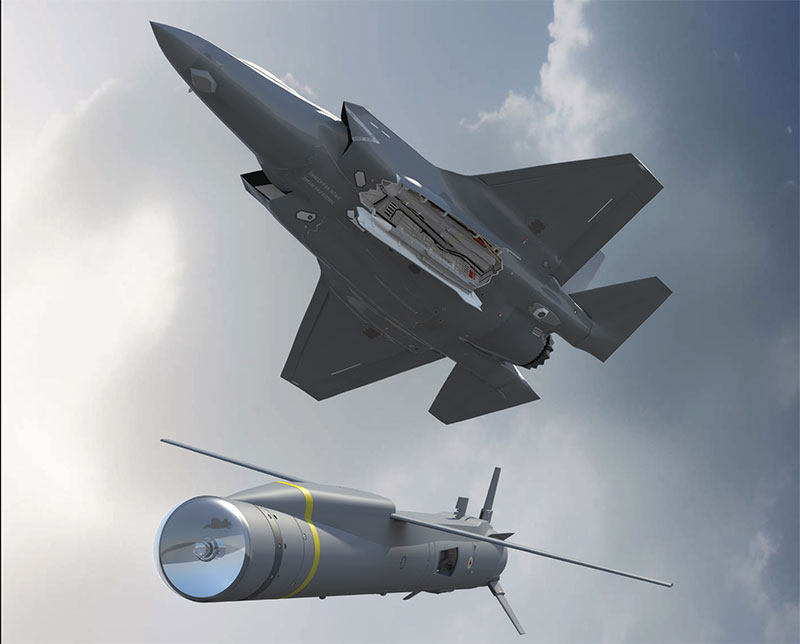Future air-launched weapons will be smart, autonomous and AI-driven
Yunus Dar
Global defence companies are increasingly investing their resources in developing hypersonics, laser weapons, electronic warfare and Artificial Intelligence. Touted as the weapons of the future, these are being developed by two powers, China and Russia, besides the US, who have already tested them. While the US acknowledges it is behind the race in this domain, the country has allocated more than USD2.5 billion in department of defense (DoD) contracts to Lockheed Martin for work on hypersonic weapons. In the modern war domain, speed is the new stealth.

Electronic warfare is also significantly changing the landscape of air-launched weapons. The technology uses radio, infrared or radar signals to confuse or disable an adversary’s electronics. Added to that, the laser weapons, which are invisible to the naked eye, have the ability to demolish targets at the speed of light with perfect precision. Acting as a directed-energy platform, laser weapons can strike repeatedly, like an endless supply of ammunition.
The weapons company, MBDA, was recently awarded a contract to arm the SPEAR cruise missile with electronic warfare, acting as networked missiles to infiltrate enemy air defences. The era of highly networked air-launched weapons, swarming together, is fast approaching. MBDA is adding the electronic warfare variant to its Select Precision Effects at Range Capability Three (SPEAR-3) mini-cruise missile. “The new SPEAR-EW will complement the SPEAR network enabled miniature cruise missile, which is designed to precisely engage long-range, mobile, fleeting and re-locatable targets in all weathers, day or night, in the presence of countermeasures, obscurants and camouflage, while ensuring a safe stand-off range between the aircraft and enemy air defences,” the company said.
SPEAR-3 has been the most popular precision-guided munition, which chooses its own targets once it flies to the target area. The target identification can also happen through data-linking of the missile via the launch platform’s sensors or from third party sensor information. SPEAR-3 is also capable of striking its target through laser guidance. However, the SPEAR-EW variant will have the ability to act as a jammer and decoy missile to distract, blind, and spoof enemy air defence systems.
The feature of networking between swarms of munitions is increasingly becoming the focus of weapons manufacturers and will likely transform the landscape of air power. The US Air Force’s Golden Horde effort to network together precision guided munitions to act as autonomous swarms after launch is an example of how the air powers are focusing on this new innovation in modern warfare, where enemy air defences are rendered useless.
In June this year, Raytheon’s GBU-53/B StormBreaker air-to-surface munition completed all operational test drops, moving it closer to initial operational capability. The StormBreaker tri-mode seeker uses imaging infrared and millimeter wave radar in its normal mode to give pilots the ability to destroy moving targets, even in adverse weather, from standoff ranges. Additionally, the weapon can use its semi-active laser guidance to hit targets. The StormBreaker also, like the SPEAR-3, uses a tri-mode terminal guidance package and, besides the GPS, inertial navigation, and a data-link system for midcourse guidance. According to Raytheon, warfighters gain ability to hit moving targets in all-weather conditions with the StormBreaker smart weapon.
The Israeli defence manufacturer, RAFAEL, also has an edge when it comes to precision weapons and has an impressive market for its SPICE family of weapons, including India. The SPICE family of stand-off, autonomous, air-to-surface weapon systems enables precision, high-volume strikes in GPS-denied arenas. They convert general purpose and penetration warheads weighing 1,000 or 2,000 lbs into precision, stand-off strike weapons with ranges of 60-100km and deliver multiple, simultaneous hits with pinpoint accuracy. Advanced EO/IR technologies allow the targeting, acquisition, and autonomous tracking of moving targets, and a scene-matching algorithm enables fully autonomous, GPS-independent missions with mid-flight path adjustment and minimum collateral damage. The SPICE consists of three variants – SPICE-2000, 1000 and 250. With a standoff range of 60 kilometres, SPICE bomb approaches the target as its unique scene-matching algorithm compares the electro-optical image received in real-time via the weapon seeker with mission reference data stored in the weapon computer memory and adjusts the flight path accordingly. SPICE 2000 consists of an add-on kit for warheads such as the MK-84, BLU-109, APW and RAP-2000. The Indian government recently signed an order to procure over 100 SPICE-2000 bombs from RAFAEL, at a cost of Rs 300 crores. The bombs were used by the IAF’s Mirage-2000 fighter jets in the airstrikes on Jaish-e-Mohammad terror camp at Balakot in Pakistan.
You must be logged in to view this content.

